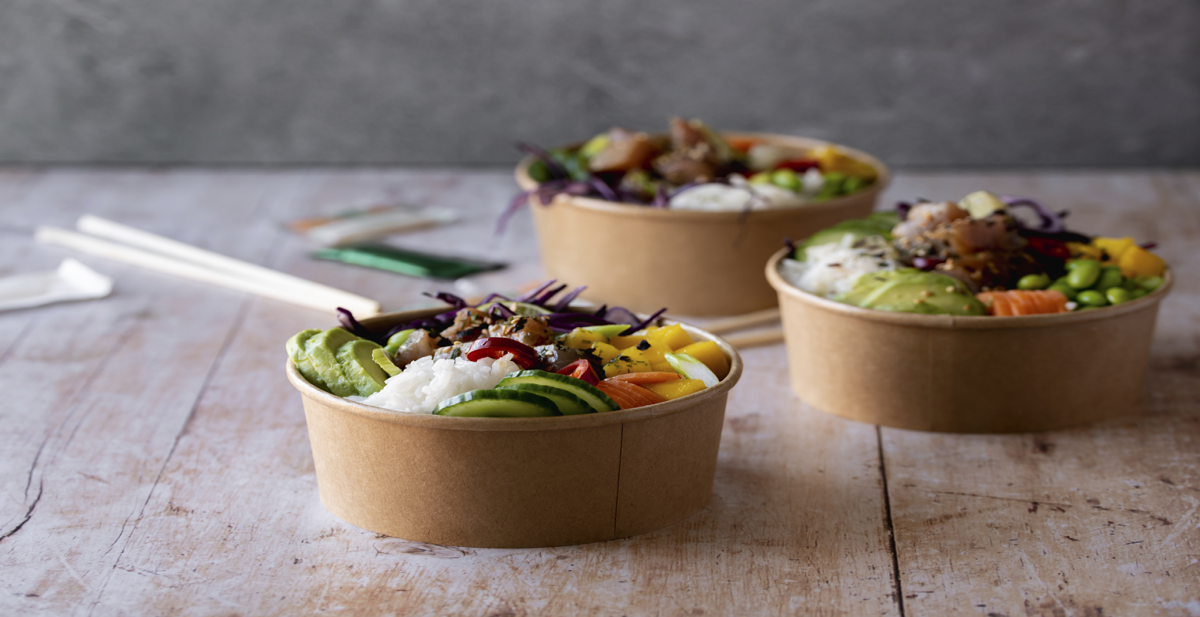Today, plastic-based packaging accounts for around 93% of the worlds flexible packaging. 1 Of this, it is estimated that a mere 17% of plastic flexible packaging is recycled into new raw materials.2

With plastic waste polluting our land and oceans, the use of plastics in flexible packaging has come under increasing scrutiny over recent years.
Consumers are growing ever more conscious of what their goods comes wrapped in, viewing paper packaging as a more environmentally friendly alternative to plastic. In 2020, a European consumer preferences survey, commissioned by Two Sides, found that 62% of consumers see paper and cardboard packaging as better for the environment than plastic.3
Due to this shift from the consumers coupled with the plastic packaging tax, Paper is seen by many brands as the golden ticket for achieving their sustainability goals. Major brands such as Unilever committed to reduce their use of virgin plastic and to use 100% reusable or recyclable or compostable plastic packaging by 2025. Paper packaging is sure to play a key role in this realisation.
 Unilever Commitments for a Waste-Free World 4
Unilever Commitments for a Waste-Free World 4
Some brands have already successfully made the transition to paper packaging. One such brand is the confectioner Nestle Japan, which in 2019 repackaged its beloved miniature KitKat bar in paper with accompanying instructions on how to fold the wrapper into an origami crane- the symbol of hope and healing. Ritter Sport, Smarties and Kinder Delice also join the rank of sustainably sealed snacks. You may even soon be eating up your favourite sweet snack with a paper-packed drink, as in the beverage market, Coca-Cola along with the Absolut Company are currently prototyping their paper bottles.
Paper is indeed very attractive as
- paper is an inherently biodegradable product, made from biomaterials itself5, not made from oil
- when recycled properly, it repulped without the need for harmful chemicals or intense amounts of heat. Around 83% of paper was recycled in Europe in 2019.
- can be reused for a desired number of times
However, It can not be used in all the applications, particularly:
- for packaging requiring moisture barrier resistance or food packed in wet environment. To achieve moisture barrier resistance, Paper-based flexible packaging is often laminated with plastic or aluminium. In this case, the paper solution is becoming non-recyclable.
- for food packed under vacuum or under modified atmosphere (MAP)
In conclusion, Paper is very attractive for the flexible packaging market. Its use depends largely on the application. For sure, the future will be sustainable easy-to-recycle solutions like mono material-plastic or flexible paper. One solution can not satisfy all the applications and requirements.
To choose the right flexible packaging material, we recommend the following considerations:
- Safety, does the new material meet food compliance rules?
- Sustainability, is it recyclable? The material should not be only recyclable but as well the quality of the recycled material should allow to re-use it for similar value applications following a circular economy approach
- Cost effectiveness, including hidden costs such as new filling equipment, at all levels of the supply chain
- Packaging performance to maintain or increase product shelf-life to reduce food waste
- Aesthetic appearance, graphic capabilities of the new material
References
- https://www.woodmac.com/news/opinion/paper-or-plastic-whats-the-most-sustainable-flexible-packaging-solution/
- https://packagingeurope.com/news/how-can-recycling-frameworks-account-for-flexible-packaging/7661.article
- https://www.forbes.com/sites/woodmackenzie/2020/08/24/is-paper-a-more-sustainable-flexible-packaging-material-than-plastic/?sh=6c2d901912d4
- https://www.businesswire.com/news/home/20191007005553/en/
- https://www.sourcegreenpackaging.com/paper-vs-plastic-which-is-really-better-for-packaging/

Introduction to a new 2D material: layered double hydroxid...

By employing this new class of inorganic adjuvants, more e...

Rising demand of Lithium and its potential challenges
